What Hi-Fi? Verdict
Yamaha’s True X Surround 90A system features a superb soundbar and subwoofer that nail movies and music alike – we just wish the surround speakers had more to offer
Pros
- +
Rich and powerful sound from the soundbar
- +
Well-controlled and dynamic subwoofer
- +
Music sounds detailed, well-timed and engaging
Cons
- -
Surround speakers are at odds with the rest of the system
- -
Large and heavy build won’t suit all set-ups
- -
Complex set-up menus and no auto-calibration
Why you can trust What Hi-Fi?
If you’re a fan of soundbars, you have Yamaha to thank. The Japanese audio brand popularised the concept with the first commercially available soundbar back in 2005 with the YSP-1, which featured 42 drive units packed into an all-in-one audio solution.
A lot has changed since then; soundbars are available in all shapes and sizes, and a fair few of them now support this thing called Dolby Atmos (you may have heard us mention it once or twice).
Naturally, Yamaha wants to keep up with the times, and as the grandfather of soundbars, it hopes to establish its rightful place as the soundbar brand amongst fierce competition from the likes of Sonos, Samsung and Sony.
The True X Surround 90A is the company’s weapon of choice to stake that claim, and with some seriously impressive specs on paper, it could be enough to reinstate its position.
However, as we know well by now, specs don’t tell the full story. We’ll need to dig into the full capabilities of this soundbar system to see if it's truly worth its sizeable price tag – so, shall we?
Price
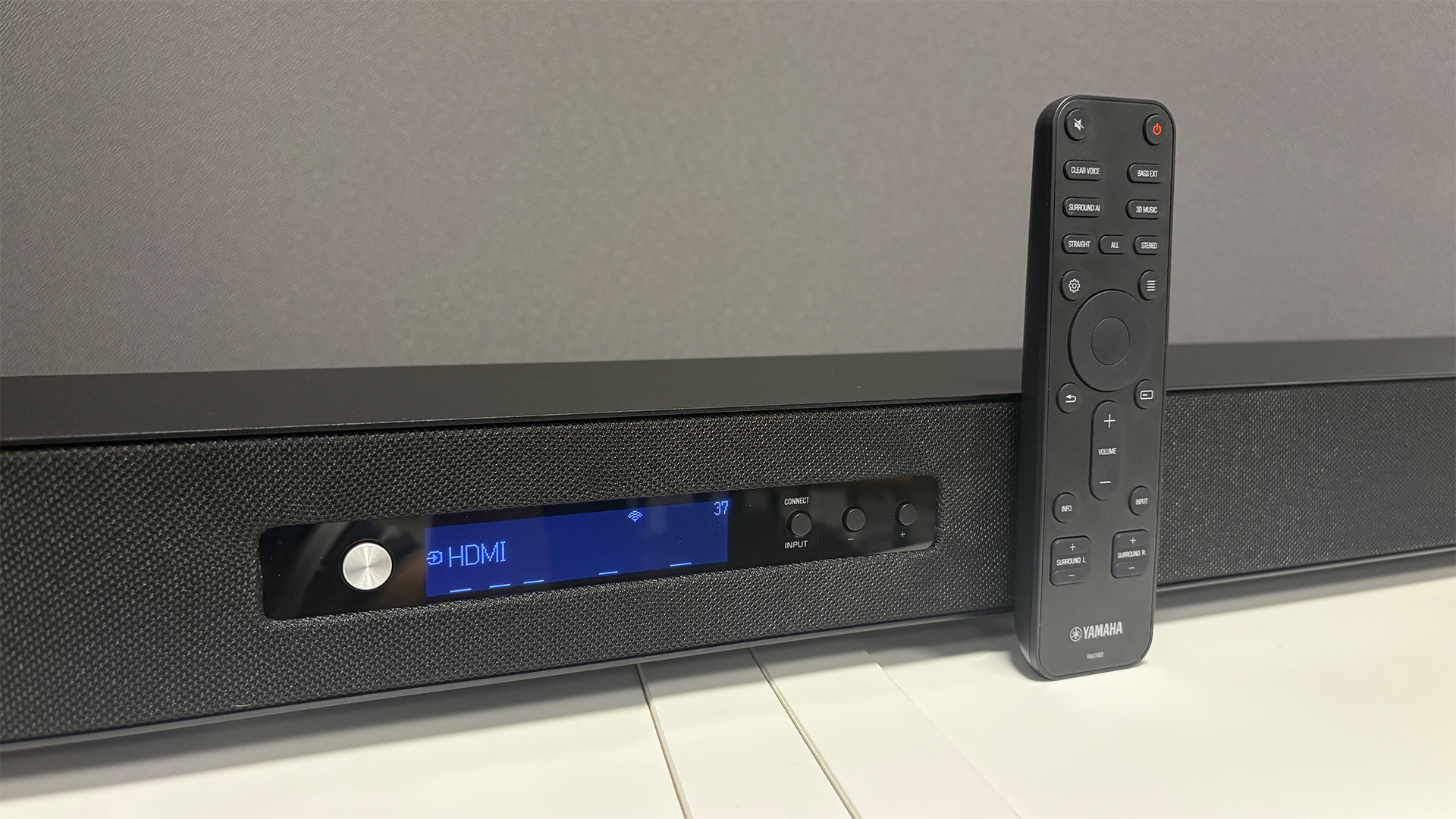
At £2116 / $3500 / AU$4499, the True X Surround 90A is a pricey bit of home cinema kit. You can forget the likes of the Samsung HW-Q990F or Sonos Arc Ultra, as they cost less than half the price of this system; instead, we look to the likes of Sennheiser and KEF to provide alternatives.
The KEF XIO is available for £1999 / $2500 / AU$3600, while the Sennheiser Ambeo Soundbar Max launched at £2199 / $2500 / AU$4000 – the latter can be picked up for closer to £1999 / $2000 in the UK and US respectively nowadays, though it seems to have retained its original price in Australia.
The latest hi-fi, home cinema and tech news, reviews, buying advice and deals, direct to your inbox.
The catch here is that those options only include a Dolby Atmos soundbar, whereas Yamaha is offering a soundbar, two wireless surrounds and a subwoofer all in one package.
Build
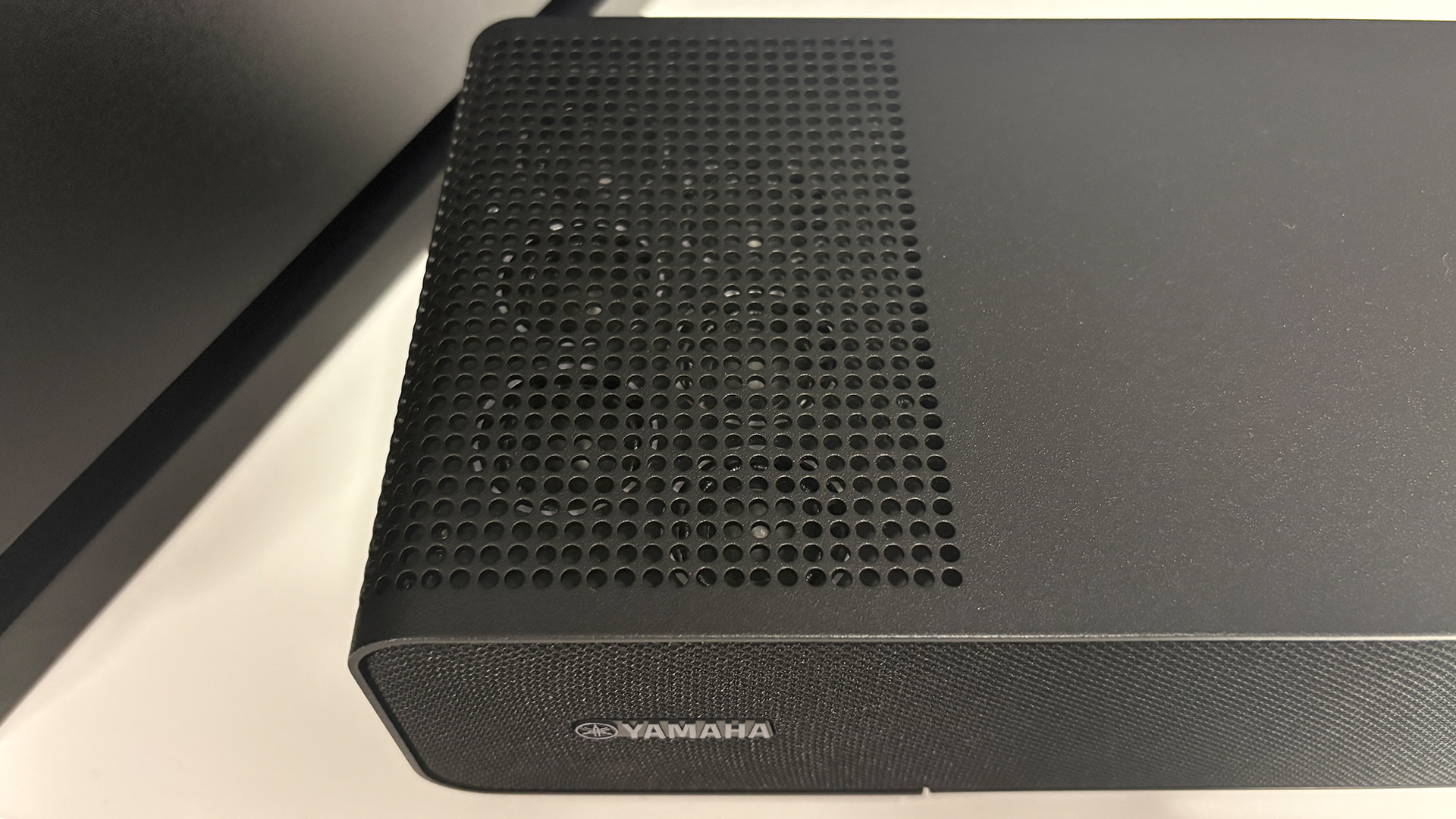
The True X Surround 90A system can best be described as sturdy, as it’s frankly built like a tank. The main soundbar measures a sizeable 8.5 x 118 x 14cm (hwd) and weighs a hefty 11kg.
That weight is on account of it being constructed entirely of a rigid metallic chassis supported by two large resin feet – both of which have been implemented with the goal of minimising cabinet vibrations and unwanted distortion.
While the soundbar certainly has presence, it’s thankfully not too tall, allowing it to sit below most TVs without blocking the display. Yamaha kindly also provides the brackets if you wish to wall mount the ’bar.
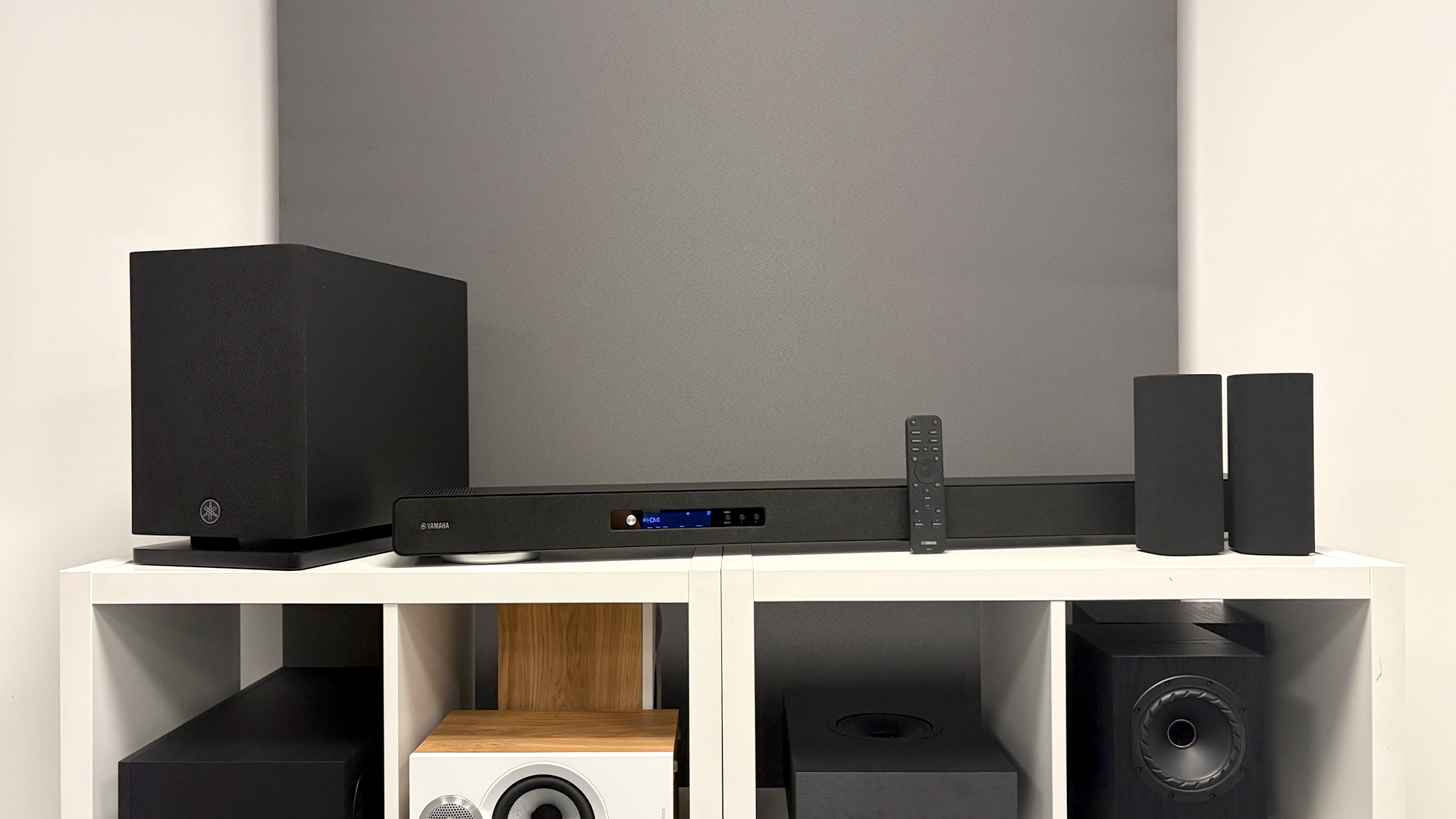
Connectivity HDMI out (eARC), HDMI 2.0 in, optical, wi-fi, Bluetooth 5.0, AirPlay 2
Format support Dolby Atmos, Dolby TrueHD, Dolby Digital Plus, DTS:X, Auro 3-D
Streaming Yamaha MusicCast (supports Spotify, Amazon Music, Qobuz and Deezer)
Voice control? No
Soundbar dimensions (hwd) 8.5 x 118 x 14.3cm
Soundbar weight 11kg
Surround speaker dimensions (hwd) 22 x 8.8 x 8.8cm
Surround speaker weight 1kg
Subwoofer dimensions (hwd) 38 x 24 x 41cm
Subwoofer weight 12.7kg
There is a fabric mesh fascia running along the front of the bar that adds a touch of class to an otherwise fairly bulky and not very visually appealing soundbar. Mind you, the Ambeo Soundbar Max isn’t much of a looker either.
The fabric is only interrupted by a small display and a trio of interface buttons. A proper onboard display is a nice touch; however, the system also supports on-screen set-up menus, meaning you won’t have to squint at the miniature screen to get the system up and running.
Moving on to the WS-X3A surround speakers, these are an evolution over the wireless units included on the Yamaha True X Soundbar System from last year. These elongated cuboid speakers are wrapped in a similar grey fabric covering and feature buttons on the top for pairing and volume adjustment. Charging cradles are included in the box; however, each speaker also features a USB-C port for wired charging if you’d prefer.
The surround speakers look pretty smart and should blend into many living room environments. The fact that they can be used completely wirelessly will also allow for greater flexibility when it comes to placement. Measuring just 22 x 8.8 x 8.8cm (hwd) and weighing a mere 1kg each, they also shouldn’t take up too much space.
Last, but certainly no means least, is the subwoofer. We’ve seen trimmed-down subs designed for small spaces from the likes of Samsung and JBL this year; Yamaha, on the other hand, has decided not to follow suit. Weighing 12.7kg and measuring 38 x 24 x 41cm, the included subwoofer is a chunky black box that will require some dedicated space. Thankfully, it too is wireless.
Features
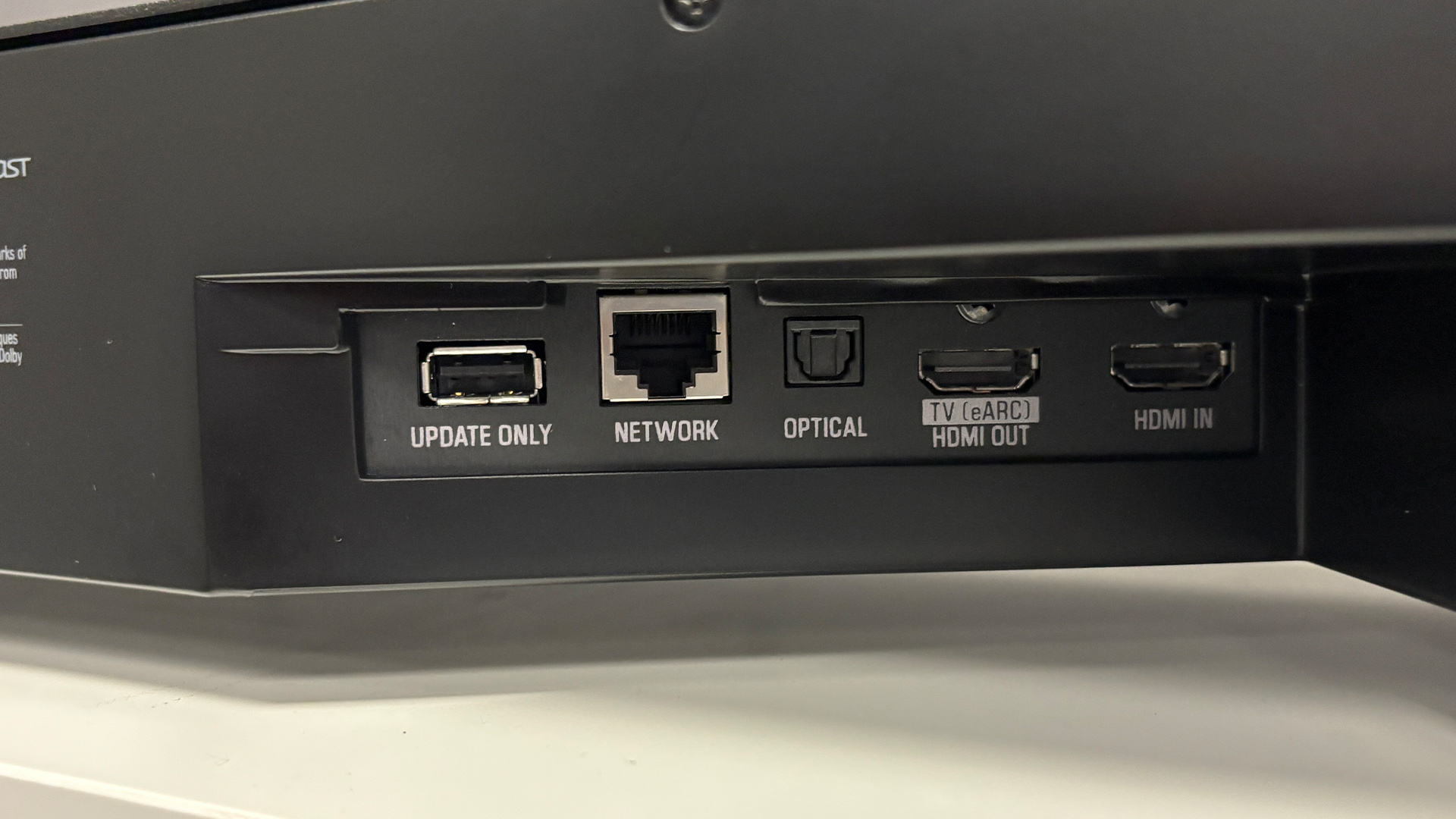
The Yamaha True X Surround 90A may look somewhat unassuming from the outside, but it's packed full of genuinely interesting technology that sets it apart from its rivals.
The main soundbar unit is home to 19 drivers, including a set of newly developed oval-shaped midrange drivers, which Yamaha says will introduce a wide range of sonic benefits.
They have been optimised to feature fewer components across the speaker structure and magnetic circuitry, which Yamaha says has resolved issues regarding cone rigidity and high-frequency response. As a result, these full-range drivers will, according to Yamaha, deliver a "powerful, balanced sound" with "rich midrange tones".
There are four of these drivers in the main soundbar – two in the centre, and one at each end handling the left and right channels – and three dome-style tweeters supporting them for higher frequencies.
That covers seven of the 19 drivers, so where are the rest? We draw your attention to the top of the soundbar to answer that question, as Yamaha has reintroduced a core component of its first soundbar and brought it into the modern era of Dolby Atmos height effects.
At each end of the soundbar, you’ll find an array of six beam-firing drivers derived from the YSP-1. They’re placed in a staggered arrangement and angled to project sound upwards and bounce it towards the seating position.
While the main soundbar is packed with drivers, the surround speakers have very few. Each of the WS-X3A units includes just two 58mm full-range drivers, backed by two passive radiators. The trouble here is that each speaker’s two drivers are positioned to face the same way, with no side-firing or up-firing drivers – we’ll come onto why that’s a bit of an issue later.
We’re also a bit unimpressed by how fiddly it can be to pair these speakers with the rest of the system. Holding down a button on the top of the speaker can put it into pairing mode, but you have to dig into the set-up menu to put the bar into its pairing mode for all of the components to recognise each other.
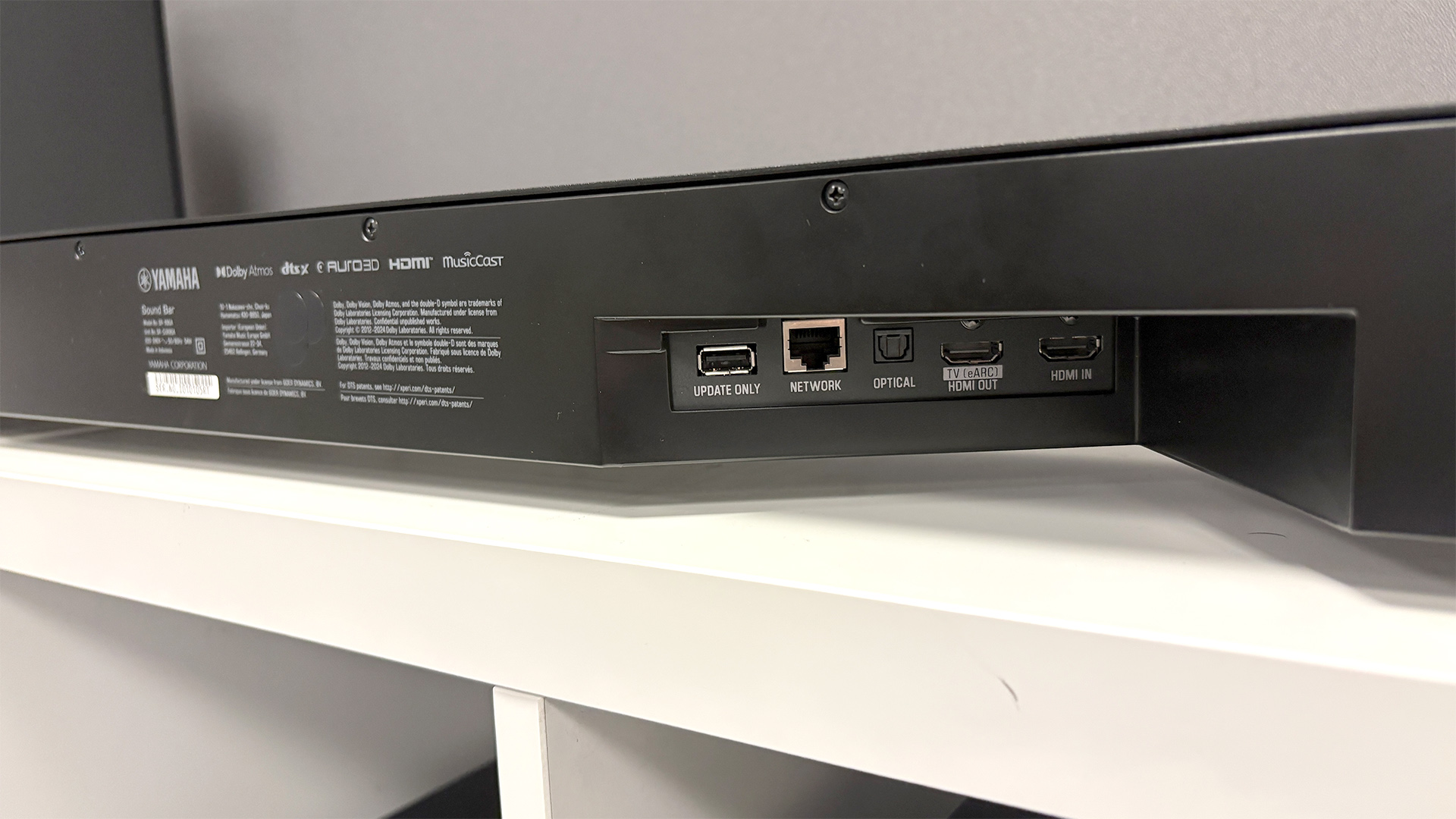
That same button also switches the speakers to the left or right position, and it can be a bit of a guessing game as to how long you need to press the button for, in order to get the desired outcome.
The bigger issue is that if you choose to disconnect the surrounds from the system to use them as individual Bluetooth speakers – a feature that Yamaha highlights as a bonus of using these wireless speakers as surrounds – you then need to put them back into pairing mode and re-pair them with the soundbar. It’s a bit of a slog, and it puts us off using them as individual Bluetooth speakers.
We thankfully get back on track with the subwoofer, which uses an 18-cm driver and a unique new Symmetrical Flare Port technology design. As the name suggests, the port features mirrored flared ends, which Yamaha says will ensure an “extremely smooth release of the strong air flow generated during bass reproduction”.
Better yet, this newly designed port system supposedly reduces port noise by 20dB, which results in “pure bass reproduction that is both powerful and deep”, according to Yamaha.
Taking a look at the outside of the bar, we find a serviceable, if slightly limited, connection selection comprising an HDMI eARC out, a 4K HDMI passthrough (disappointingly not a 4K/120Hz equipped one), an optical, USB (for updates only, not media playback) and Ethernet. That HDMI passthrough does, however, support Dolby Vision and HDR10+, which is a nice touch.
Wireless connectivity is solid, with Apple AirPlay 2 allowing us to beam music directly to the bar. Yamaha’s MusicCast Controller app handles the rest of the streaming duties, as you can link your preferred streaming service to the app or play music from a network server.
The True X Surround 90A doesn’t miss a beat where audio format support is concerned, as Dolby Atmos, DTS:X and Auro 3-D are all supported.
On top of that are a selection of different sound modes, which are featured as shortcuts on the remote control. These include clear voice and bass extension modes, both of which are fairly self-explanatory, as well as straight and stereo sound modes, which are best used for listening to music. Auro 3-D gets its own button, which Yamaha highlights as being an ideal option for enhancing live music content.
Furthermore, Yamaha’s Surround:AI sound mode – which has featured on a number of its Aventage home cinema receivers – can be enabled to adapt the soundfield via content recognition algorithms and clever sound processing systems.
The system seems to default to Auro 3-D’s Auro-Scene upmixing regardless of the native format, meaning even Dolby Atmos content will undergo Auro 3-D processing as standard. Switching to the Dolby Surround setting on the soundbar prevents this, but it's not the default option, and wrestling with the bar to output the native audio format every time we switch discs gets a bit frustrating after a while.
The bar becomes even less user-friendly when we realise that it does not feature any sort of automatic calibration or room correction. Yamaha deemed this to be unnecessary, as only the upward-firing channels use beam forming technology, and the rear speakers can be placed in inconsistent positions.
There are settings within the soundbar menus to adjust how the upward-firing drivers position their sound, but they’re fairly complex, asking you to adjust beam angles and focal lengths. We’ve dealt with our fair share of complex home cinema audio kit, and even we’re struggling to make heads or tails of what each setting means.
After checking in with Yamaha, we’re informed that the beam angle refers to the sweet spot relating to the positioning of where the overhead audio effects should land, and the best way to calculate this is to deduct the height of the bar’s position from the ceiling height.
While that may sound like a simple process, it’s not made very clear by the detail-light descriptions attached to each of the settings options. We also question how deeply the average consumer would dig into these settings and processes, as getting this granular is often reserved for AVR and speaker package combinations.
Ultimately, we feel that microphone-assisted calibration (using either a dedicated microphone or mic built into the soundbar, à la the KEF XIO and Samsung HW-Q990F) would solve many of the headaches we experience here, and is something it’s fair to expect at this level.
Sound
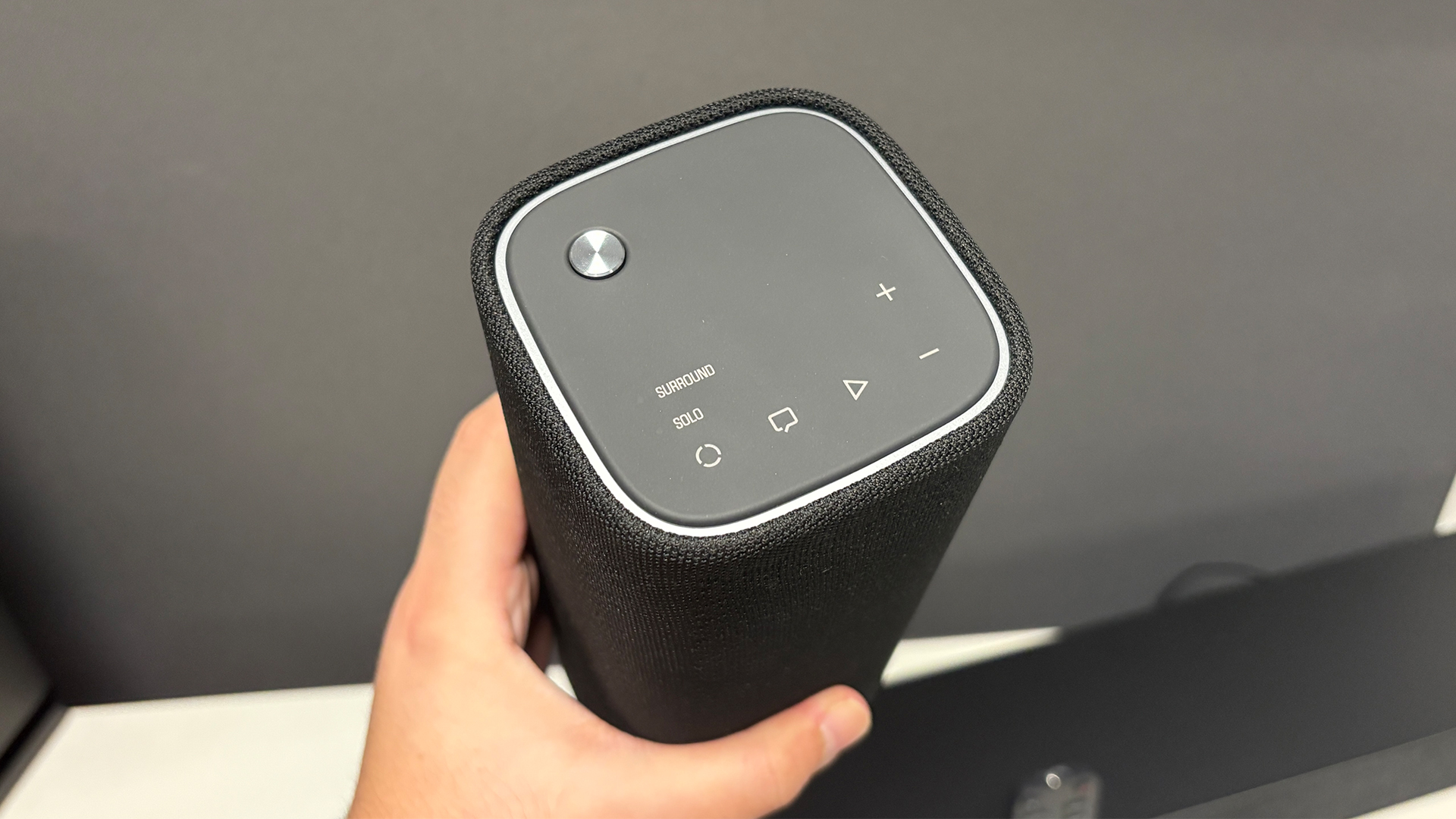
While it may be slightly frustrating to set up, the good news is that the True X Surround 90A’s soundbar rewards us with a pretty impressive sonic showcase, and its subwoofer is among the best we’ve heard from a soundbar package. But one weak link in the system holds it back from achieving true sonic greatness.
We’ll start with the positives – the True X Surround 90A delivers a rich, weighty and powerful cinematic sound that’s easy to get immersed in. We fire up the 4K Blu-ray of Dune: Part Two and reach the sequence in which a Harkonnen spice harvester is ambushed by Fremen freedom fighters.
This sequence is conveyed with the necessary sense of drama and intensity thanks to the soundbar’s punchy and expressive characteristics. The slashes of Fremen swords are delivered with a clean and assertive effect, which sounds appropriately sharp without coming across as abrasive or thin.
As Chani and Paul strategise how to shoot the enemy ornithopter out of the sky, their commands are presented with superb clarity and authority, and the soundbar does an excellent job of capturing the muffled vocal effect created by their masks.
All the while, the subwoofer produces tightly controlled yet powerful bass that underpins the thunderous soundtrack. We have no trouble believing Yamaha’s claims regarding the benefits of the new port design, as bass refuses to distort or falter in even the trickiest scenarios – including Blade Runner 2049’s infamous Chapter 2 sequence.
The subwoofer plays a key role in ramping up tension here, as its tuneful and precise sound builds dynamically throughout the sequence. Hans Zimmer’s soundtrack – specifically the unnerving Flight To The LAPD track that plays over this scene – is conveyed with superb timing.
We switch to Civil War to test how the system handles Dolby Atmos effects, and find it to be a bit of a mixed bag. While the height and scale are both certainly present and correct in a scene in which a swarm of Chinook helicopters soar overhead to initiate the final battle of the film, we find ourselves wishing that the soundbar would project said height effects further into the room.
That “bubble of sound” that we experience with Samsung’s Dolby Atmos soundbar package isn’t really present here, which takes us out of the action somewhat. There’s unquestionably still height to the sound, and we tinker with the fiddly settings mentioned earlier to try and improve this, but we find tracking down a combination of settings that pushes the height effects towards our seating position to be easier said than done.
This lack of a truly encompassing Dolby Atmos sound is at least partly down to the lack of up-firing drivers in the surround speakers, and this is unfortunately not the only way in which they hold the overall system back.
Drivers that only fire forwards can, of course, still disperse sound fairly widely, but that doesn’t seem to be the case with those built into Yamaha’s surround speakers. Instead, there’s a rather ‘beamy’ quality to their delivery and quite an obvious gap in the soundstage between them and the soundbar at the front.
The surrounds are a bit of a tonal mismatch, too, with a lack of weight and dynamics making effects sound distracting as they’re passed from the front to the back of the room.
Ultimately, the surrounds rather take away from the overall package, when they should add to it. That’s a shame, because the rest of the package is superb.
We can’t help but feel that Yamaha would have been better off including surround speakers designed with surround sound/Atmos duties alone in mind, and hadn’t gone down the Bluetooth-speakers-as-surrounds route – particularly as they’re actually fairly thin and unengaging as portable speakers for music.
Thankfully, the rest of the system is very musical indeed by soundbar standards. Casting Aurora’s Churchyard to the system via Tidal, we’re met with that same rich, powerful and engaging sound we heard with movies, and we have absolutely no qualms about the subwoofer getting involved here either.
Bon Iver’s From, meanwhile, is underpinned by a smooth, decadent and textured guitar riff, while Justin Vernon’s tenor vocal cuts through with a crisp, sparkling quality.
Verdict
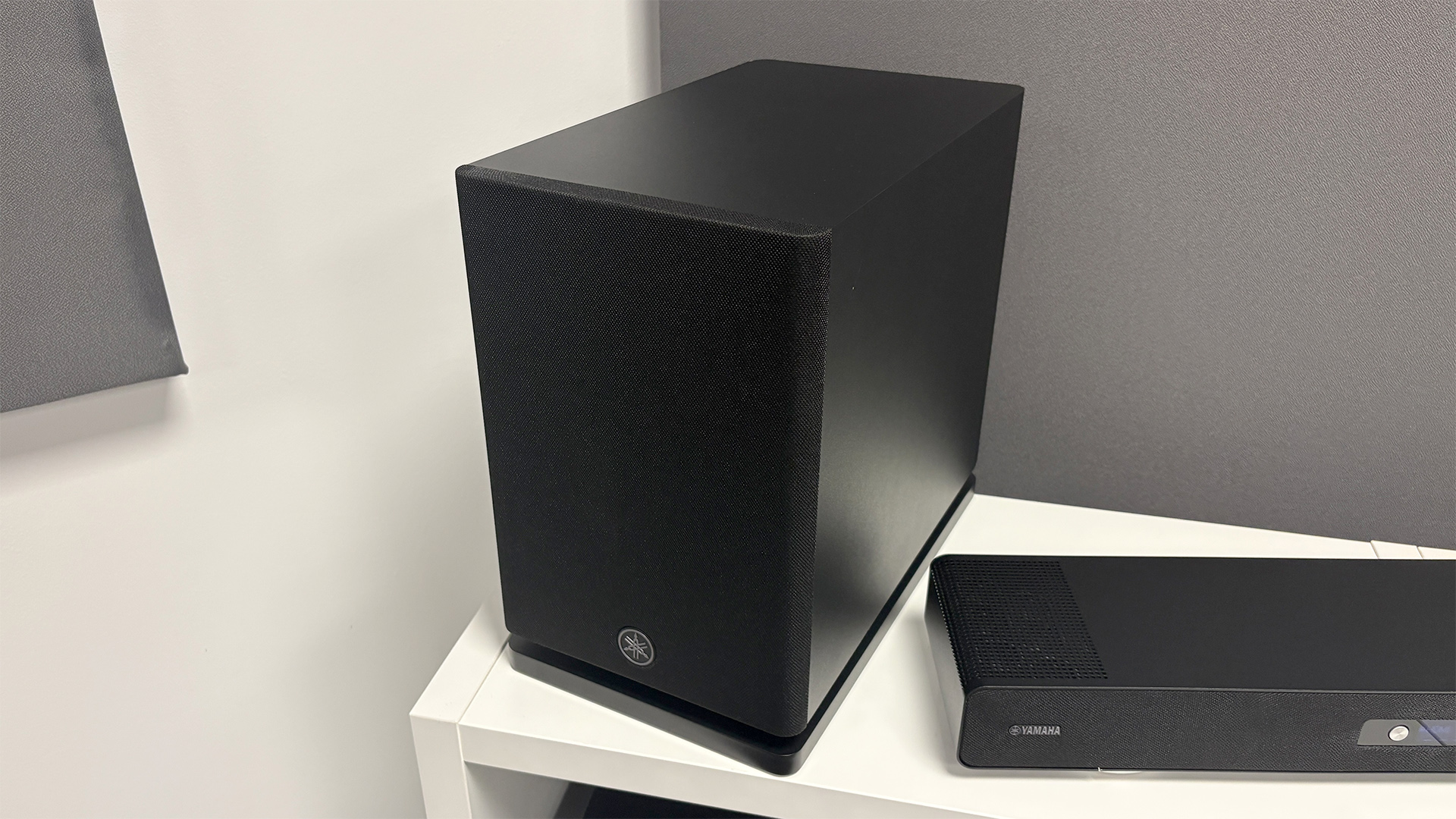
The Yamaha True X Surround 90A is mostly brilliant, but it falls frustratingly short of true greatness.
The Japanese audio giant has struck gold with the soundbar and subwoofer, which together produce powerful, detailed, tuneful and engaging sound with both movies and music. A little more Atmos-ness and greater usability would be nice, but these aren’t primarily why the system misses out on five stars.
That’s down to the surrounds, which take away from, rather than add to, the overall performance. You can simply choose not to use them, of course, but that feels wasteful – particularly as they’re not very accomplished as standalone Bluetooth speakers.
Ultimately, we wish that Yamaha had gone with surround speakers designed purely for that purpose, or left them out and reduced the price. In either scenario, we could be looking at a five-star system.
SCORES
- Sound 4
- Build 4
- Features 3
MORE:
Read our review of the KEF XIO
Also consider the Samsung HW-Q990F
Read our Sennheiser Ambeo Soundbar Max review
Best soundbars: options for every need, recommended by our experts
Lewis Empson is a Senior Staff Writer on What Hi-Fi?. He was previously Gaming and Digital editor for Cardiff University's 'Quench Magazine', Lewis graduated in 2021 and has since worked on a selection of lifestyle magazines and regional newspapers. Outside of work, he enjoys gaming, gigs and regular cinema trips.
- Ketan BharadiaTechnical Editor
- Tom Parsons
You must confirm your public display name before commenting
Please logout and then login again, you will then be prompted to enter your display name.
